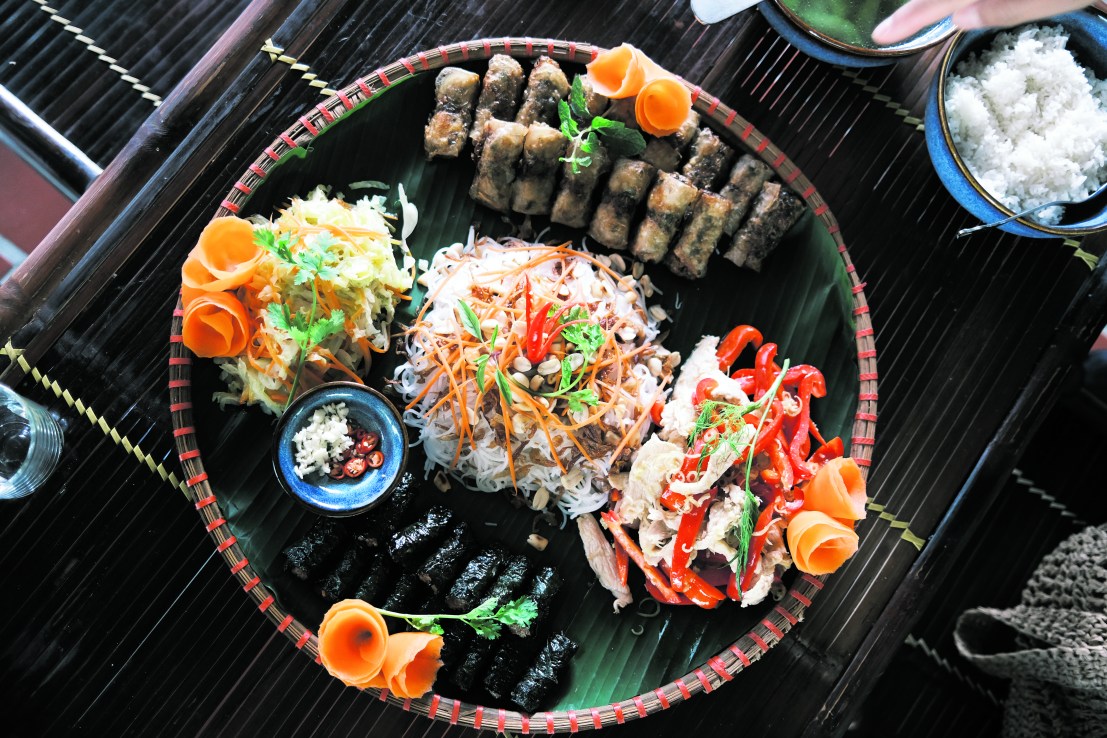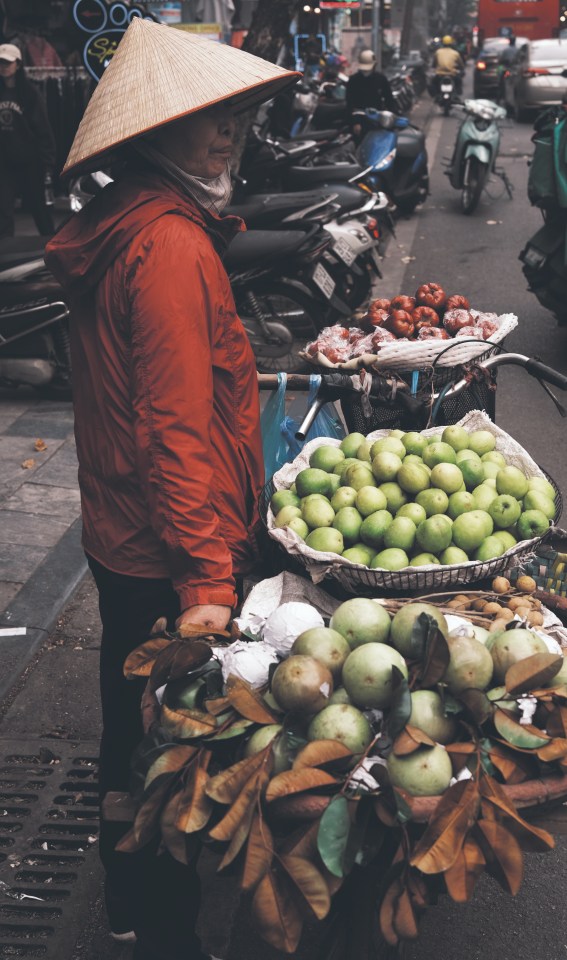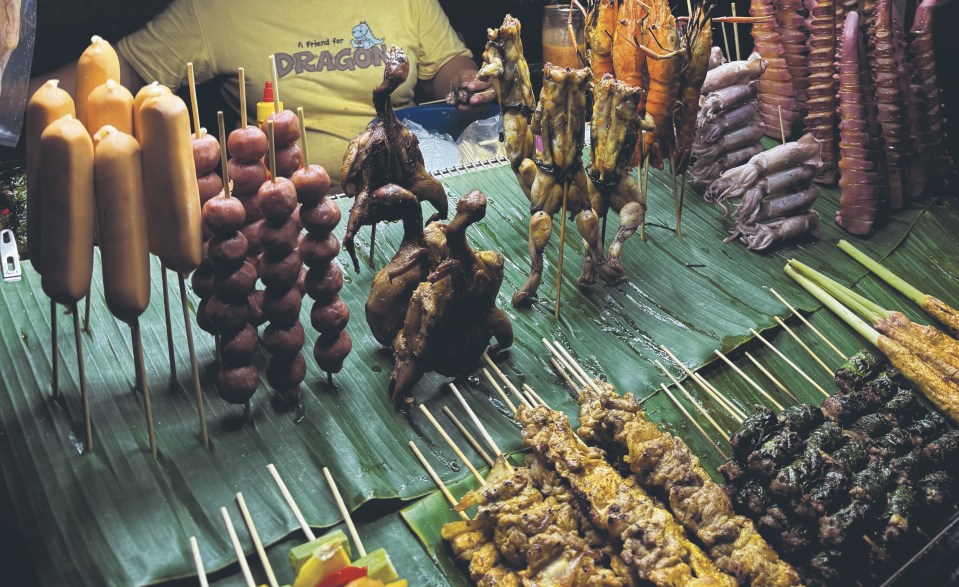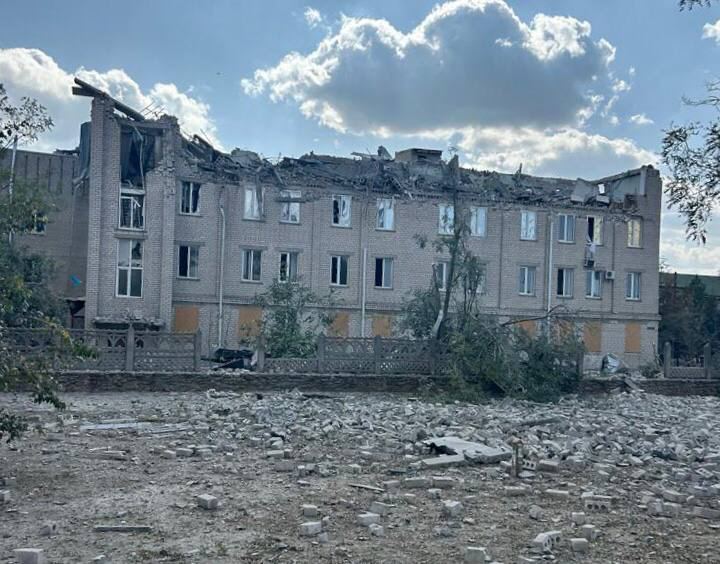Going deeper than ever into Vietnam’s enticing food scene
Going deeper than ever into the exciting Vietnam food scene


In search of untouched culinary gems in the lesser-visited regions of Vietnam, the strange and beautiful country, by Luke Abrahams
When you think of Vietnamese food, chances are you’d be hard-pressed to name anything more than a bowl of pho or a bánh mì baguette. It’s okay, don’t be too hard on yourself: London, as richly flavourful and cosmopolitan as it is, only offers a mere smidge of the flavours Vietnam has to offer. I first realise this in Hanoi, capital of this welcoming socialist republic. I am sitting in Café Giang in the city’s Old Town, a small hole-in-the-wall coffee shop that serves one of Hanoi’s finest inventions: egg coffee.
The thick and creamy espresso-sized cup of java was the brainchild of Nguyen Van Giang, created in response to milk shortages during the first Indochina War in 1946. It’s since become a nationally acclaimed staple, mostly made of egg yolks, sugar, condensed milk and exceptionally strong robusta coffee. Despite its mind-altering strength, a third-generation Giang tells me the stuff is also good for me; apparently, a morning cup of egg coffee can help stabilise blood sugar, increase metabolism and even boost your mood. I’m sold, wired and ready to cancel my Pret subscription.
Heck, even Michelin finally got the memo about Vietnamese food after releasing its first foodie guides to Hanoi and Ho Chi Minh last summer. Aside from its newfound Michelin buzz, a dazzlingly good exchange rate and the sheer variety of cuisine are attracting travellers to this culinary hinterland. Sipping another cup of yolks, I look to the streets around me, and this complex country’s food makes a little more sense. Scooters scramble for the right of way amid the explosive thunder of blaring horns, and all around there are the complex architectural layers of French, Chinese and Japanese colonisation. Remnants of this cultural mishmash still prevail, especially in the food, and the result is some of the best and most innovative fusion cuisine in the world.
Vietnam travel: tour company Original Travel take you deeper than ever
Endless cookery classes and food-themed walking tours make it easier to discover the country’s culinary heritage, but it’s the local street food scene where my love affair with Vietnamese food is forged.
Found on practically every street corner of the Old Town and French quarter, I try canh chua, a refreshing sweet and sour soup made with fish, pineapple, tomatoes, and vegetables including okra and elephant ear; ban xeo, a delectable crispy fried crepe stuffed with pork and shrimp; banh bao, large steamed buns stuffed with minced meat, quail eggs, Chinese sausage and veg; banh trang tron, one of the most popular street food snacks made from shredded rice paper, chilli powder, dried shrimp, and fried shallots; and for desert, a mouthful of mung bean cake, mixed together with ground mung beans, sugar and grapefruit flower essential oils… all washed down with green tea, naturally. All of the above, and more, cost less than £25.

Then there’s the bánh mì. What you get in the UK is nothing in comparison to the vast variety of baguettes you get here. The bread is softer. The pâté richer. The fillings grander. And depending on which part of town you are in, the garnishes even more fiery. I find the Elite Banh on an unassuming street corner just by the city’s famed St Joseph’s Cathedral. The line for the small cart is mammoth, with a mix of locals and western folk like me. A product of French colonial rule during the Nguen dynasty, my baguette is filled with layers of pork, pâté, cucumber, fresh chilli and carrots. The defining difference from what we get back home? It’s unusually toasted. I ask the owner why and he says: “Because we like it like that. Everyone has their own version and this is how we eat it at home. If you don’t like it, go somewhere else.”
A short ride downtown to Bún cha Huong Liên, which I’m told serves the finest bowls of the popular grilled pork noodle dish. It’s a local gaff, first made famous by former US President Barack Obama who once dined here with the late American chef Anthony Bourdain during a state visit in 2016. Since Obama’s visit, the restaurant has literally preserved the table they sat at, commemorating their meal as the “Obama combo”.
I am served a broth of small patties of seasoned pork and slices of pork belly, both grilled over charcoal and marinated in a bowl of nuoc cham–based sauce. The secret ingredient? I have no idea. The waitress says it’s so secret she’d rather die than tell me. Whatever it is, it’s fermented over 25 years and it makes all the difference.
Familial generational secrets hold the key to some of Vietnam’s most delicious bites. Down in the city of Ninh Binh, I find the cuisine gets way more local, and way more country. A short two-hour or so drive south of Hanoi, the landscape morphs from chaotic city streets to giant, moss-flecked limestone mountains that rise up from the lotus flower-flecked paddies.
It’s what the locals dub ‘Ha Long Bay on land.’ Very few Western tourists go here, and while it’s all beautiful, the most raw and authentic part of this Avatar-esque landscape is the nature reserve, Van Long. Less polished than the more touristy area of Trangh An, it is where most of the locals call home.
I join Marie for a typical lunch. Set on the Red River Delta that snakes just outside her home, we feast on a medley of bites served on banana leaves. There’s banh cuon, delicate rice noodle rolls loaded with minced beef, and mushrooms and topped with shallots; seared chicken garnished with fresh chillies handpicked from her garden, nut-mixed vermicelli stir fry noodles made fresh by her friend in the hills; and cha gio, fried spring rolls loaded with freshly cooked ground pork. Everything and she means quite literally everything, should be dipped in homemade fish and chilli sauce, as per “the Ninh Binh way.” Driving, full and a little weary, I stop off at a roadside cart selling the area’s most famed delicacy: roasted mountain goat. The beast, like a pig on a spit roast, is cooked whole, face and hooves charred. Some even have their eyes still intact. You can either buy it as is or select cuts to take home to pop in a broth or curry.
My next stop is Hoi An. Once a key exchange post on the spice route linking the Orient to the occident, this ancient Central Vietnamese city has always been a melting pot of cuisines. To make the area’s signature chewy noodle dish, cao lau, locals use water straight from the archaic Ba Le well, a chasm of pure brown H2O just off the coast of the city. Topped with sliced pork, crunchy rice crackers, aromatic spices, and a handful of fresh coriander and lettuce, it’s an incredible assortment of flavours and textures. Thanh Cao Lau Restaurant in the New Town serves the OG. It’s really a local street food joint, so expect no trimmings and service without the BS. You see everything cooked from the comfort of your own stool. Magic.
By the time I arrive on the coast, the foodie offering gets wildly spiritual. At Amanoi, perched just outside the small fishing village of Vin Hy near the town of Cam Ranh, I discovered the cuisine of the Cham people. The journey starts at dusk with a brisk walk to a hidden spot within the hotel’s nature reserve. Before we feast, we are blessed in an ancient Vietnamese tongue by a Cham Master who utters various mantras to rid our spirits of any black magic and bring us good fortune.

Once cleansed, we eat. Everything has been foraged within a few miles of the hotel. I try papaya salad with marinated octopus, tamarind broth with chicken, chargrilled beef topped with herbs, stir-fried prawns with chilli salt, braised fish fillet with turmeric and pumpkin custard for dessert. It’s a banquet that’s been 800 years in the making since the first Cham dynasty crossed into Vietnam from their native India.
I toast out my culinary odyssey of Vietnam down in Ho Chi Minh City with Original Vespa tours. Sped around the city gorging on oc (snails), bánh canh cua (crab tapioca noodles) and a bowl of pho for good luck, I finally admit that after 10 days of feasting, I’m a little full. While Vietnam’s cerulean seas and breathtaking vistas will always draw the crowds, it’s the food that gives the country its soul. Each region has its own specialities rooted in the legends of tribal communities and forged through decades of invasions. Wherever you go, you’ll always encounter something wildly different, and that’s the allure.
Visit Vietnam yourself
Original Travel offers a ten-night trip to Vietnam. Prices start at £5,095pp based on a two-person trip, including direct Vietnam Airlines flights, all transfers, tours and hotel accommodation, with a two-night stay at Amanoi
Read more: As tourism returns, we say: ‘Good morning Vietnam!’
Read more: Channelling Succession in Hong Kong and The White Lotus in Vietnam
Read more: The 5 best Paris hotels to stay for the 2024 Olympics
Read more: The Goodness of Nicaragua



